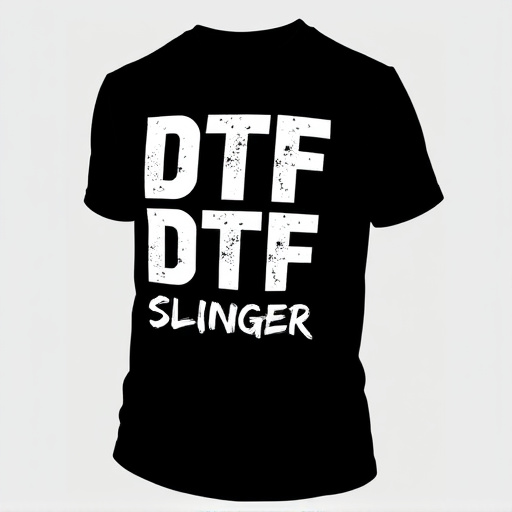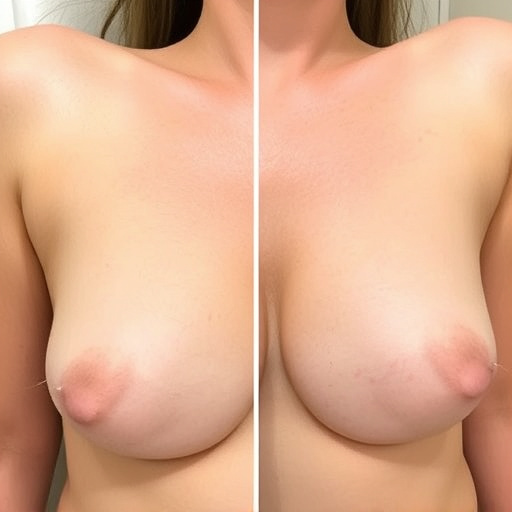Direct-to-film (DTF) transfer technology has revolutionized printing and design, particularly in textiles, offering unparalleled detail and color accuracy. DTF printing provides high-quality, durable T-shirt designs that resist fading and peeling. Achieving optimal results requires a blend of superior materials, skilled technicians, advanced inks, and careful calibration. Proper wash cycle optimization ensures print longevity. DTF is widely used in textiles for custom apparel and signage, catering to both small and large-scale graphics demands. The future of DTF technology involves advanced ink formulas and enhanced digital technologies for improved durability and detail.
Direct-to-film (DTF) printing is revolutionizing the way we produce high-quality, durable prints. This cutting-edge technology promises unmatched longevity, ensuring that vibrant colors and crisp details remain intact even after multiple washes. In this comprehensive guide, we’ll explore the intricacies of DTF transfer technology, its promise of durability, key components for optimal results, and real-world applications. Discover how DTF printing is transforming industries and setting a new standard for print quality.
- Understanding Direct-to-Film (DTF) Transfer Technology
- The Quality Promise: DTF Prints and Durability
- Key Components in Achieving High-Quality DTF Transfers
- Optimizing Wash Cycles for Longevity of DTF Prints
- Real-World Applications of DTF Printing
- Future Trends in DTF Technology
Understanding Direct-to-Film (DTF) Transfer Technology

Direct-to-film (DTF) transfer technology has revolutionized printing and design by enabling high-quality imaging directly onto various materials, including textiles. This cutting-edge process involves transferring ink or dye from a digital source to a substrate using specialized equipment and precise techniques. DTF offers unparalleled detail and color accuracy, making it a favorite among professionals in the textile industry.
The DTF transfer process begins with creating a design digitally, often using specific software tools. This design is then printed directly onto a film or sheet material, typically a polyester or polypropylene base. The printed film acts as an intermediate layer, which is later transferred to the final substrate, such as fabric. During the transfer, heat and pressure are applied to fuse the ink or dye permanently onto the fabric, ensuring vibrant colors and crisp details that withstand multiple washes.
The Quality Promise: DTF Prints and Durability

Direct-to-film (DTF) prints offer a promise of quality and durability that sets them apart from traditional printing methods. When it comes to T-shirt printing, DTF transfers provide an exceptional guarantee of longevity, even after multiple washes. This is because DTF printing directly applies ink to the fabric, creating a bond that resists fading and peeling.
The process ensures that the design remains vibrant and intact, with colors remaining rich and true even after repeated launderings. This makes DTF prints an excellent choice for those seeking long-lasting, high-quality garments. Whether it’s a custom T-shirt or a promotional item, DTF transfers deliver a professional finish that can withstand the test of time and multiple wearings.
Key Components in Achieving High-Quality DTF Transfers

Achieving high-quality DTF transfers involves a meticulous process where several key components work in harmony. First and foremost, the original film or artwork must be of exceptional quality, ensuring minimal imperfections that could affect the final print. The expertise of skilled technicians is vital; they play a crucial role in preparing the film for printing, ensuring precise color accuracy and sharp detail.
The choice of DTF inks and printing techniques is another critical aspect. High-performance inks designed specifically for DTF printing offer vibrant colors and exceptional durability. Advanced printing technologies, such as specialized printers with high resolution and precision, enable detailed reproduction of intricate patterns. Proper calibration and color management throughout the process guarantee consistent and accurate results, ensuring that each DTF print maintains its quality even after multiple washes.
Optimizing Wash Cycles for Longevity of DTF Prints

To ensure the longevity of direct-to-film (DTF) prints, optimizing wash cycles is paramount. The ideal wash cycle should be tailored to the specific ink and fabric combination used in DTF transfer printing. Generally, milder detergents and lower water temperatures are recommended to prevent fading or damage to the print. A gentle wash cycle, along with avoiding harsh scrubs or aggressive stirring, helps maintain the vibrancy of colors and preserves the integrity of the print.
Additionally, allowing adequate drying time between washes is crucial. Rapid drying, either through natural air or high-speed dryers, reduces the risk of mold growth and ensures that moisture does not seep into the fabric fibers, causing potential discoloration or degradation over time. Proper care during wash cycles significantly contributes to keeping DTF prints in excellent condition even after multiple cleanings.
Real-World Applications of DTF Printing

Direct-to-film (DTF) printing has found its way into various real-world applications, revolutionizing the way we produce and interact with printed materials. One of the most notable uses is in the textile industry, where DTF transfers are increasingly popular for custom apparel and fashion items. This method allows designers and enthusiasts to create unique, personalized designs that can withstand multiple washes, ensuring their artwork remains vibrant and intact.
Moreover, DTF printing has made its mark in signage and advertising. Outdoor banners, posters, and even vehicle wraps benefit from this technology as it provides high-quality prints that are durable and capable of withstanding exposure to elements like sunlight and rain. The versatility of DTF allows for the production of everything from small, intricate designs to large-scale, eye-catching graphics, making it a preferred choice for businesses seeking visually appealing and long-lasting promotional materials.
Future Trends in DTF Technology

The future of direct-to-film (DTF) technology promises exciting innovations that will further enhance its already impressive capabilities. As demand for high-quality, durable prints continues to grow, DTF printers are developing advanced techniques to meet these needs. One notable trend is the exploration of new ink formulas designed to withstand even more rigorous washing processes, ensuring vibrant and long-lasting DTF transfer results.
Additionally, the integration of digital technologies, such as improved image resolution and color accuracy, will play a significant role in shaping the industry. These advancements promise to deliver sharper details and more accurate color representation in final DTF prints, catering to the diverse needs of various sectors, from fashion to home décor.














